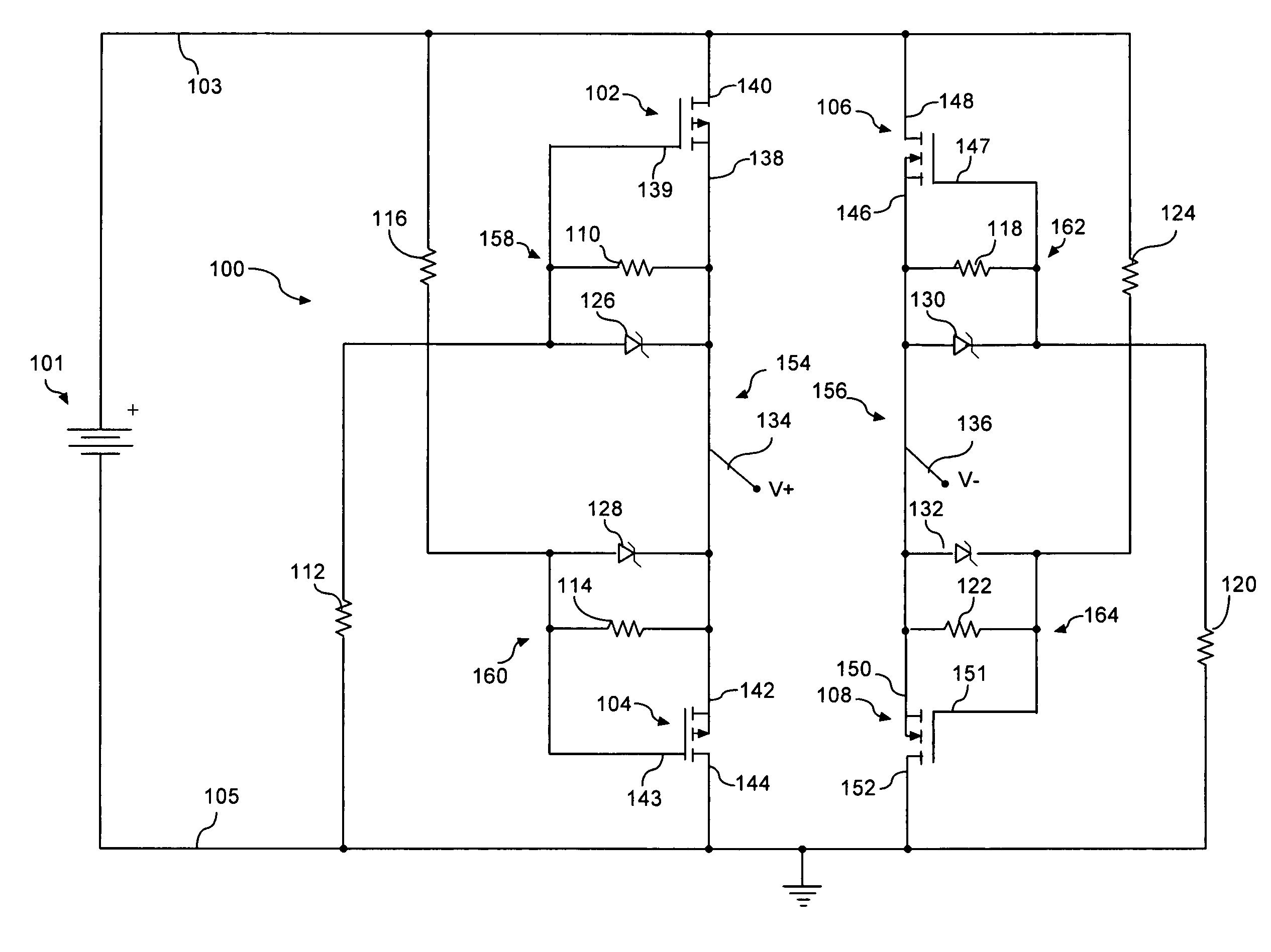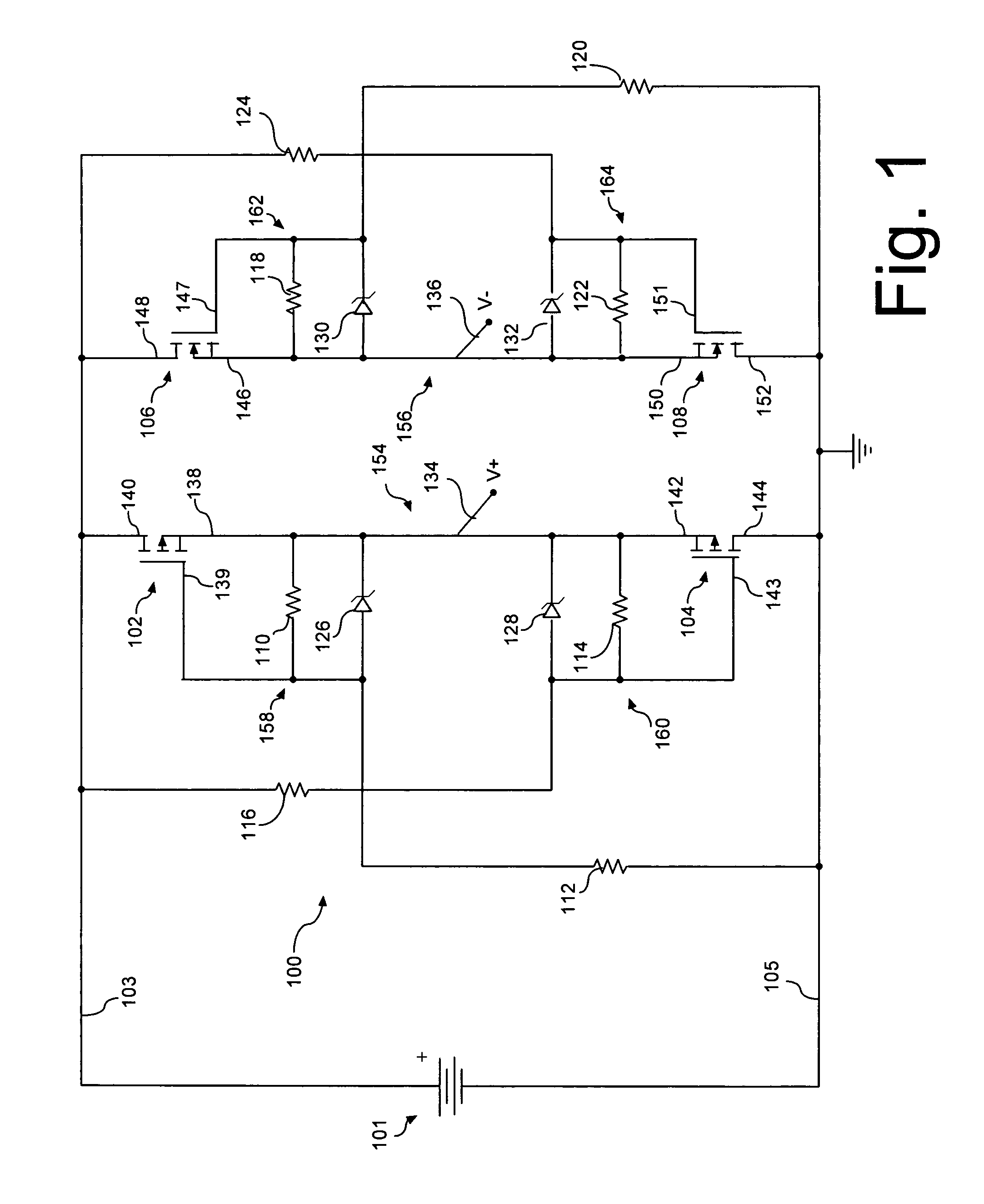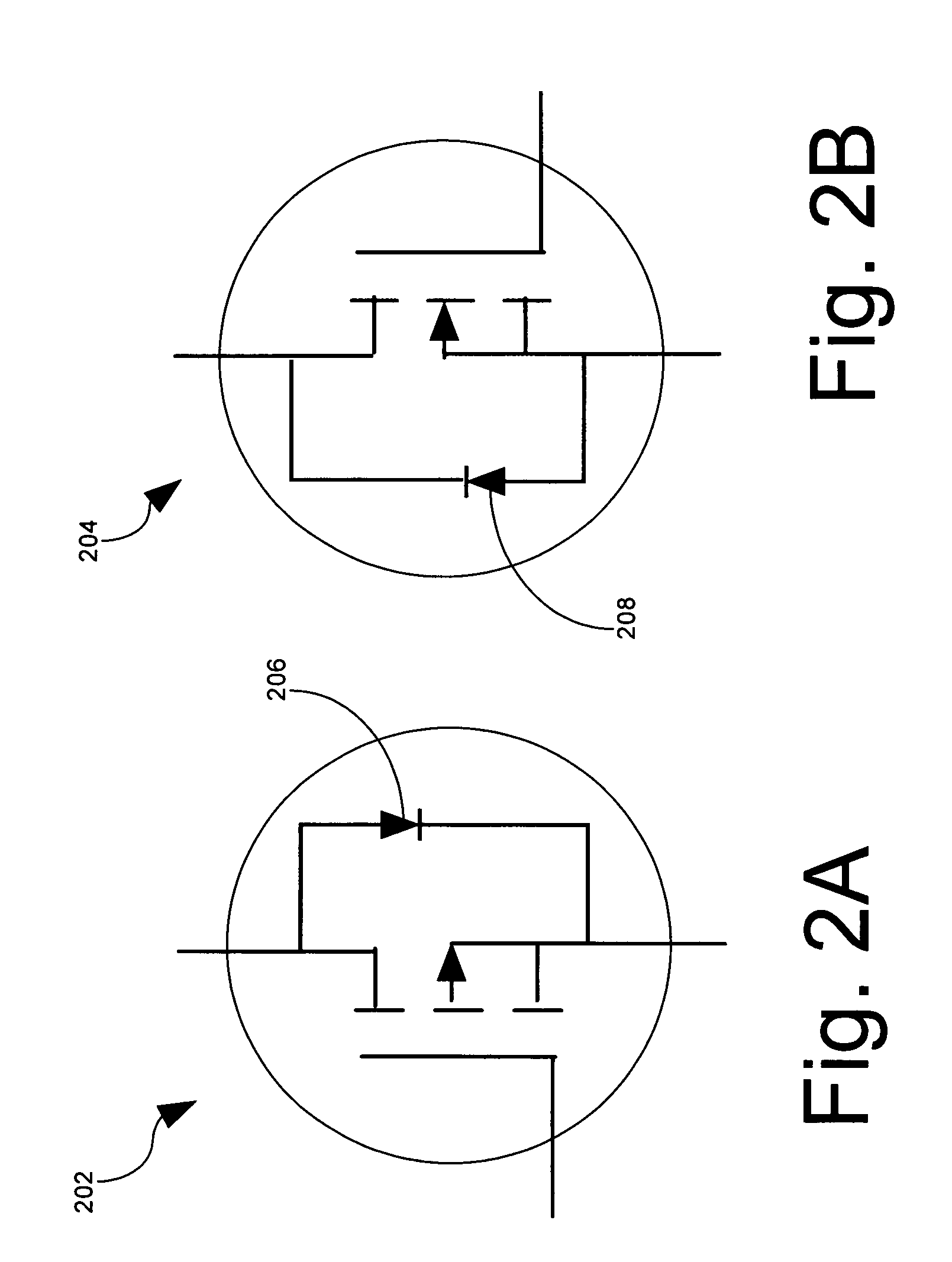Biased-MOSFET active bridge
a technology of active bridge and mosfet, which is applied in the direction of reverse polarity correction, safety/protection circuit, power conversion system, etc., can solve the problems of significant variable voltage drop across the battery reversal circuit, equipment damage, and equipment damag
- Summary
- Abstract
- Description
- Claims
- Application Information
AI Technical Summary
Benefits of technology
Problems solved by technology
Method used
Image
Examples
Embodiment Construction
[0015]A transistor active bridge circuit 100 is shown in FIG. 1. The circuit 100 shown is useful for a variety of purposes, including operating and protecting devices in the event of a battery polarity reversal. As may be observed in FIG. 1, circuit 100 is connectable between a pair of input lines 103, 105 and a pair of output lines 134, 136 to ensure that a load receives a proper polarity voltage regardless of whether a power source 101 provided for powering a load (not shown) is properly installed.
[0016]Circuit 100 includes first and second field-effect transistors 102, 104 of a first channel type. The transistor active bridge circuit also includes third and fourth field-effect transistors 106, 108 of a second channel type that is different from the first channel type. For example, the first and second field effect transistors 102, 104 can be P-channel type whereas the third and fourth field effect transistors 106, 108 can be N-channel type. According to an embodiment of the inven...
PUM
 Login to View More
Login to View More Abstract
Description
Claims
Application Information
 Login to View More
Login to View More - R&D
- Intellectual Property
- Life Sciences
- Materials
- Tech Scout
- Unparalleled Data Quality
- Higher Quality Content
- 60% Fewer Hallucinations
Browse by: Latest US Patents, China's latest patents, Technical Efficacy Thesaurus, Application Domain, Technology Topic, Popular Technical Reports.
© 2025 PatSnap. All rights reserved.Legal|Privacy policy|Modern Slavery Act Transparency Statement|Sitemap|About US| Contact US: help@patsnap.com



